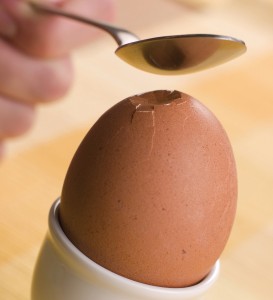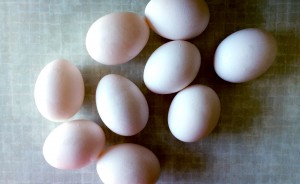 by Sharon Quercioli
by Sharon Quercioli
I care about what I put into my body and don’t have a lot of time (or patience) to cook with complicated ingredients. But I’ve been doing some research and found that eggs are a great food to build meals around. Hey, even I can make eggs! Here’s what I’ve learned about them:
Eggs contain all nine essential amino acids, making them a complete-protein food.
Eggs are one of the few foods that naturally contain vitamin D.
1 large egg contains approximately 80 calories. (The white has approximately 20 calories, and the yolk has approximately 60 calories).
While soft-boiled eggs got a bad rap for a while, a soft-boiled egg is safe to eat as long as it’s cooked for at least 3-1/2 minutes. This should raise the temperature of the egg to approximately 140 degrees and pasteurize it.
To reduce calories, fat, and cholesterol in recipes, use more egg whites and fewer egg yolks — you won’t taste the difference.
To lighten up your omelet or scrambled eggs, try adding a small amount of water instead of cream or milk when you’re beating the eggs. Milk products tend to harden the yolk and add calories you don’t need.
 Eggs should always be cooked over low heat — high heat makes eggs rubbery.
Eggs should always be cooked over low heat — high heat makes eggs rubbery.
To beat egg whites more quickly and make them fluffier, add a pinch of salt, let them come to room temperature, then beat.
For a good plant fertilizer, dry eggshells in the oven, then pulverize them in a blender to make bone meal.
To tell how old an egg is, place the egg in a pan of cold water. If it lies on its side, it’s fresh; if it tilts on an angle, it’s approximately three to four days old. If the egg stands upright, it’s probably about 10 days old; if the egg floats to the top, it’s old and shouldn’t be used.
Ok….Get Crackin’!
